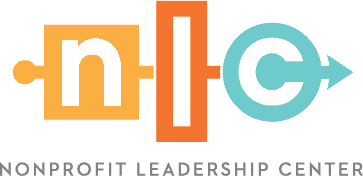Nonprofit work environments are fast-paced and somewhat chaotic at times. However, working longer, faster, and harder is no longer the answer to enhancing productivity or improving overall performance. Organizations are hitting a proverbial wall with this approach, as it too often results in many working slower, shorter and less satisfied.
"Today, there is a growing recognition that the pace of change is so great we cannot possibly solve all the problems at the rate we need to … working to solve root problems alone is not enough and will never work because the pace of change is too fast. What is needed now is to build capacity, connect people, and provide a platform for sharing knowledge and advancing common agendas."
Judith Rodin, Former President, The Rockefeller Foundation
Addressing overwhelm and chaos in the workplace requires a leadership paradigm shift that replaces the traditional, top-down leadership model with one that emphasizes empathy, understanding and inclusiveness. One such approach nonprofits should consider is mindful leadership.
What is Mindful Leadership?
Mindful leadership is our ability to tap into our inner wisdom to create a flourishing and thriving workplace environment. It involves self-awareness, emotional intelligence, resilience, compassion, and positive relationships.
Nonprofits that embrace mindful leadership practices support team members by shifting from a mindset of scarcity to one of abundance. This shift to more optimistic thinking better equips us to navigate day-to-day challenges and courageously lead our organizations in service to our missions.
Mindful leadership is rooted in the principles of mindfulness — a mental state achieved by focusing one’s awareness on the present moment while calmly acknowledging and accepting one’s feelings, thoughts and bodily sensations.
A mindful approach to leadership encourages leaders to be fully present, empathetic, and conscious of their actions and decisions. It emphasizes leading with intention, purpose, and a deep understanding of oneself and others.
Self-Awareness & Emotional Regulation
A cornerstone of mindful leadership is self-awareness. Self awareness in leadership separates the good from the great leaders. It involves recognizing one’s strengths, weaknesses, emotions, and the impact of one’s behavior on others. A study conducted by Harvard Business Review found that leaders at the highest levels tend to have better self-awareness — a true starting point for leadership. Self-awareness creates more trusting and productive work environments while also ensuring leaders are better equipped to manage stress and stay calm and clear in the midst of external stressors.
The moment to moment awareness further aids in emotional regulation, another critical component of leadership that ensures you can stay calm under pressure. You might agree with BetterUp Co-Founder Alexi who refers to this as “managing your own psychology,” wherein you take control of your thoughts, feelings and actions by employing:
- Mindfulness: Everything is neutral, nothing is good or bad
- Metacognition: Awareness that our actions are based on our own thinking
- Reframing: Managing our thoughts, that will inevitably lead to action
Studies have shown that with a regular daily practice of mindfulness (even just 10 minutes), you can significantly reduce feelings of stress and negative emotions (like, anxiety), while increasing your positive emotions, allowing a more optimistic approach to be explored.
Empathy & Compassion
Mindful leadership fosters empathy and compassion. By being present and attentive, leaders can better understand the perspectives and needs of their team members. Research from the Center for Creative Leadership indicates that empathy in leadership is positively correlated with job performance. Leaders who demonstrate empathy enhance employee satisfaction and engagement, leading to higher productivity and reduced turnover.
Decision-Making
A study in the Journal of Business Ethics found that individuals high in mindfulness are more likely to act ethically, value upholding ethical standards, and use a principled approach to ethical decision-making. As leaders, being able to have a degree of non-judgmental awareness of the present moment and ability to reduce the influence of personal biases and preconceptions can be somewhat of a super power! As a coach, I have found mindfulness to be an essential tool in working with nonprofit executives to enhance their focus and concentration, allowing them to prioritize effectively and manage their attention better. We often misinterpret “time management” as the disruptor of our day-to-day challenges, especially in nonprofit organizations where we wear so many hats and have a multitude of stakeholder needs to consider. But the real issue is our attention management. Mindfulness in our approach can be essential to making this shift.
Strategies to Make Mindfulness Practices Routine
Now that you know the importance and benefits of mindfulness in leadership, here are some easy-to-implement strategies to bring mindfulness practices into your daily routine:
- Mindful Meditation: Spending several minutes practicing a kindness meditation gives you a chance to strengthen your compassion muscle for yourself and others.
- Mindful Listening: This involves fully focusing on the speaker (being present is a true gift to those we lead), avoiding interruptions, and being present in the conversation. This practice enhances communication and builds trust within teams.
- Reflective Practices: Reflecting on one’s experiences, decisions and interactions helps gain insights and foster self-awareness across all team members, creating a culture rooted in learning and not just performance. Consider the evidence-based positive psychology practice, Three Good Things, wherein you identify three things that went well for the day and note why each went well. Research has shown the benefits of just a week of this practice extends positive benefits in our optimism and wellbeing for six months.
- Cultivate a Growth Mindset: Psychologist Carol Dweck describes a growth mindset as believing that abilities and intelligence can be developed through dedication and hard work. This mindset fosters resilience and a willingness to embrace challenges as opportunities to learn and grow. Research shows that leaders who promote a growth mindset create a more innovative and adaptive organizational culture, an effective approach to nonprofit capacity when hiring more staff isn’t an option.
- Create a Mindful Work Environment. Integrate mindfulness practices into your organizational culture. Start the first two to three minutes of a meeting in silence or engage the team in a mindful listening exercise to ground everyone before diving into the agenda. Or, highlight and leverage the strengths of each team member. Encourage team members to share how they’ve used their strengths in their work in the past few days. This does not always need to involve formal training programs. It could just be the simple act of leaders encouraging regular breaks for mindfulness exercises and promoting a culture of open communication and psychological safety.
The Journal of Occupational Health Psychology found that organizations that support mindfulness practices see improvements in employee well-being and overall organizational performance.
The benefits of a mindful approach to leadership extend beyond individual leaders to the entire organization and serve as an important foundational building block to integrate well-being into organizational strategy. The long-term effects can help advance nonprofit missions within our communities for years to come:


